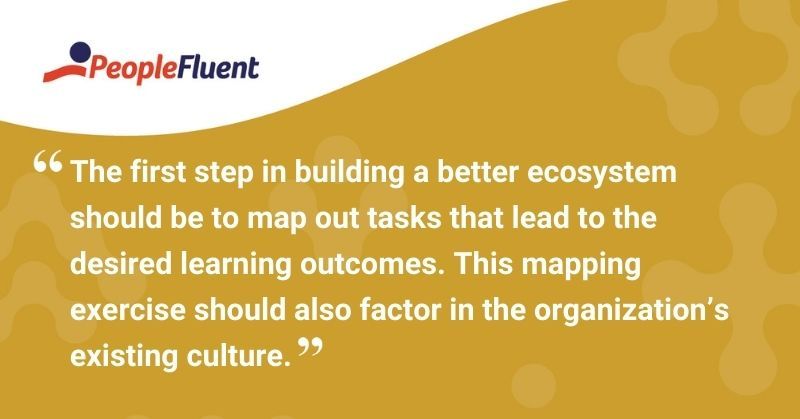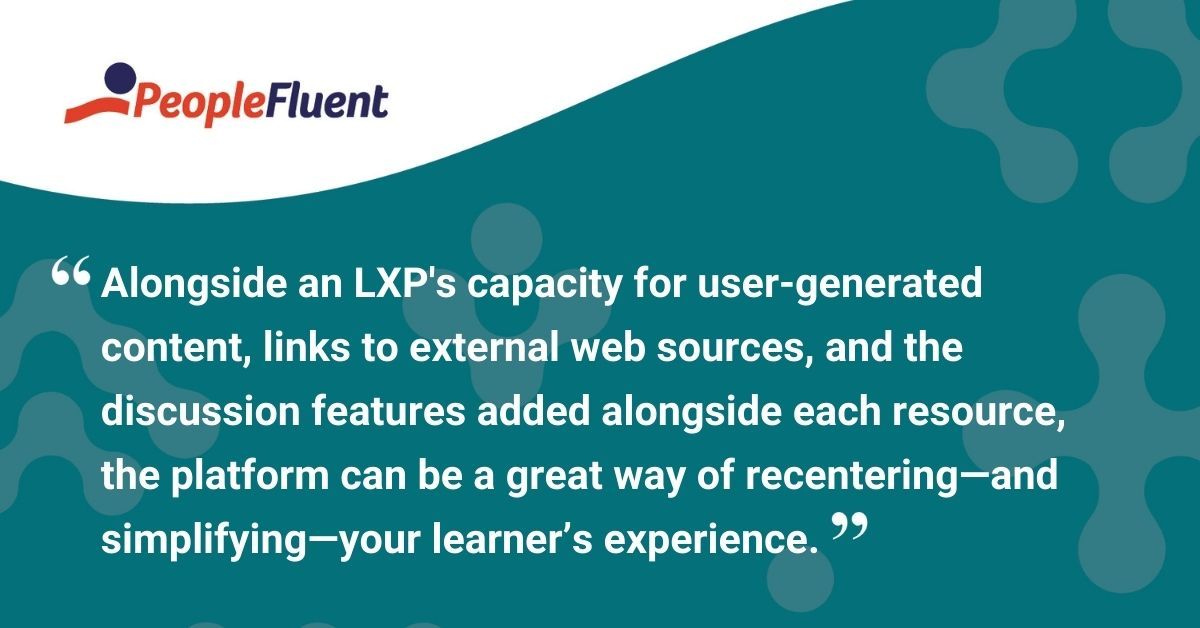Published: Feb 18, 2021Time to read: 5mins Category: Learning
3 Ways to Simplify Your Thinking Around Learning Ecosystems
Is the learning ecosystem alphabet soup of LXPs, LMSs, LRSs, LAPs, and APIs scaring your organization away from closer integration of your enterprise learning platforms? Building a learning ecosystem may actually be a lot easier than you think it is. Keep these three actions in mind and start linking your systems today.
For most organizations, the “single platform for eLearning” approach is ancient history.
New systems better suited to delivering, creating, and measuring many varied and high-quality types of learning content have found widespread acceptance. However, organizations have often purchased these platforms as and when they were needed—only to then find themselves with a lot of disparate parts that don’t talk to each other. Or overlap in function.
Building a more cohesive set of platforms—a fully functioning learning ecosystem—is the ideal. However, it’s an intimidating sounding task, one that too many organizations are scared away from. But it doesn’t have to be that way. As we’ll see, learning ecosystems can actually be quite simple!
YOU MIGHT ALSO LIKE | ‘When Features Aren't What Matters: Choosing the Right Technology for Your Organization’
1) Be Guided By Your People and Their Learning Outcomes
People are maybe the most overlooked and underrated element of a learning ecosystem. Nonetheless, any approach that fails to consider what people need to achieve, and the desired outcomes of their activity within it is doomed to failure. Or, at least, inefficiency.
The first step in building a better ecosystem should be to map out these tasks and outcomes. This mapping exercise should also factor in the organization’s existing culture. Too many organizations fall into the trap of trying to force their employees into using a new approach dictated by new learning tools. Unfortunately, innovation in this area is often only helpful if it improves the effectiveness or efficiency of an existing practice.
Therefore, focus your ecosystem planning on your people and what works for your organization. Consider:
- That the tasks and outcomes of learners, learning creators, and stakeholders in management are all worthy of consideration
- When a platform largely replicates the function of another, you need to investigate and evaluate the reasons why each platform is necessary
- That employee use of external sources of information should be embraced and not replaced as part of the ecosystem. Give them opportunities to share useful resources they find (for example, in your learning experience platform).
IS IT TIME TO SWITCH? | ‘5 Signs It’s Time to Upgrade Your LMS’

2) Realize That Building an Ecosystem Doesn’t Have to Be a Huge Project
Maybe at some point down the road, you’ll have a big, impressive constellation of LMSs, an LXP, an LRS, and an xAPI-powered learning analytics platform such as Watershed pooling it all with data from your HRIS and performance platform. In the meantime, it’s perfectly ok to start small. If you just link two previously unlinked systems together, you’re still building an ecosystem and potentially benefiting from the data connection.
It’s also worth mentioning that making those connections doesn’t immediately become impossible the minute that a platform is discovered to be incompatible with xAPI. While the whole point of xAPI is to make connections easier, the reality is that, in the wider context of software development, there are plenty of platforms out there with their own APIs. If you have an in-house development team, they may well be up to the task of getting the data you need without getting xAPI involved.
Better still, there are a limited number of platforms on the market, and someone out there has already done the work to create the connections between them. Asking around the xAPI community, we’ve found things like Zapier connections that others have already created, that have helped us bridge the gaps and grow our learning ecosystem with little outlay.
READ MORE ON NEW LEARNING PLATFORMS | ‘Dealing With Data: 4 Steps to Take When Switching to a New Learning Platform’
3) New Additions Should Make Your Ecosystem Less Complex—Not More
Adding new platforms to your ecosystem isn’t inherently bad, but doing so needs to meaningfully serve the tasks and outcomes that your employees seek. If a new platform reduces the number of places that your people need to go (while still retaining the benefits of those other venues), it has the potential to be a great new addition.
Two great examples of new learning tech that help to simplify the end-user’s interaction with your ecosystem are content controllers and LXPs:

Content Controllers
A tool that helps simplify a content creator’s workflow when learners have multiple venues in which to receive learning. Rather than uploading to each platform individually, your learning professionals can upload to the content controller tool, which will then replicate the content across all of your platforms. This cuts down content management and update time considerably, and removes the risk of serving different versions in different venues.
Learning Experience Platforms
Though an LXP, in the mold of our very own Instilled by PeopleFluent, does a lot more than just curation, they are still hugely useful as a way of establishing a single venue for learning in your organization. Rather than having your learners check everywhere that learning can be staged in your organization, put a link to all of your courses in an LXP.
Alongside the platform’s capacity for user-generated content, links to external web sources, and the discussion features added alongside each resource, an LXP can be a great way of recentering—and simplifying—your learner’s experience.
RELATED READING | ‘What's the Difference Between an LMS and an LXP? [Buyer's Guide]’
Simplify the ecosystem issue even further: Ask how we can help you realize and grow your ecosystem.
Discover How Learning Builds Skills and Ensures Compliance
Design, deploy, track, analyze, and report on enterprise learning and compliance programs. PeopleFluent helps you execute your programs seamlessly, so employees upgrade their skills and you get results.